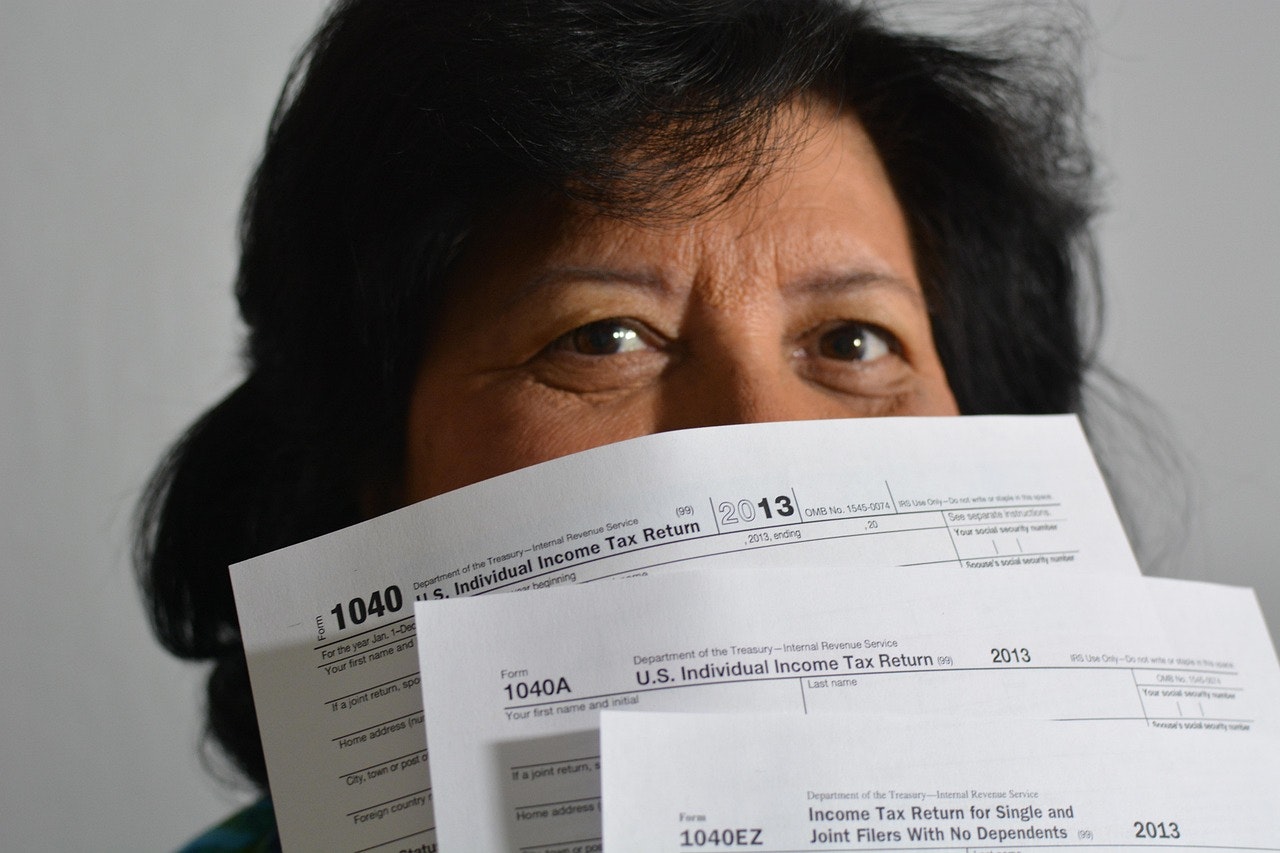Understanding IRS Penalties for Late Payments and Estimated Taxes: What Every Taxpayer Should Know
Nobody likes surprises from the IRS—especially when those surprises come with penalty notices. Whether you're a business owner, freelancer, investor, or simply have a more complex tax situation, understanding how the IRS calculates penalties can save you hundreds or even thousands of dollars.
The truth is, the IRS doesn't just care about how much you pay; they care about when you pay it. Even taxpayers who ultimately get refunds can face penalties if their payments weren't timed correctly throughout the year. Let's break down how these penalties really work and, more importantly, how you can avoid them.
How the IRS Calculates Penalties
The IRS uses a pay-as-you-go system, meaning taxes must be paid as income is earned throughout the year, not just when you file your return. When you don't pay enough tax during the year, either through withholding or estimated tax payments, the IRS charges an underpayment penalty based on three key factors:
- Your Prior Year Tax Liability The IRS generally requires you to pay at least 90% of your current year's tax liability or 100% of your prior year's tax liability (110% if your prior year's adjusted gross income exceeded $150,000). This "safe harbor" rule based on last year's taxes provides predictability—you can avoid penalties by matching what you paid last year, even if you end up owing more this year.
- The Amount You Underpaid The penalty is calculated separately for each payment period. The IRS determines how much you should have paid by each quarterly deadline and charges interest on any shortfall from that date until the underpayment is satisfied.
- Timing of Your Payments This is where many taxpayers get caught off guard. The IRS charges penalties based on when payments were due versus when they were actually made. The longer you wait to make a payment, the more penalty you'll owe, as the IRS essentially charges interest on the "loan" you've given yourself by not paying on time.
The Peculiar Quarterly Payment Schedule
One of the most confusing aspects of estimated taxes is the payment schedule. Despite being called "quarterly" payments, they don't follow regular three-month intervals:
- 1st Quarter: January 1 - March 31 (Due April 15)
- 2nd Quarter: April 1 - May 31 (Due June 15)
- 3rd Quarter: June 1 - August 31 (Due September 15)
- 4th Quarter: September 1 - December 31 (Due January 15 of the following year)
Notice something odd? The second "quarter" is only two months long, while the third and fourth quarters are three and four months, respectively. This unusual schedule has historical roots dating back to the Revenue Act of 1943, when the current withholding system was established. The schedule was designed to align with agricultural income patterns and traditional business cycles of the era, when many Americans received significant income from farming operations that generated most revenue during harvest seasons. While our economy has evolved dramatically, this quirky timeline remains embedded in the tax code.
A Critical Distinction: Withholding vs. Estimated Payments
Here's a crucial point that many taxpayers miss: the IRS treats withholding and estimated tax payments very differently when it comes to timing.
Withholding from W-2 wages, 1099 retirement distributions, and other sources is considered paid evenly throughout the year, regardless of when it actually occurred. If you have $12,000 withheld from your December IRA distribution, the IRS treats it as if you paid $3,000 each quarter.
Estimated tax payments, however, are credited only when actually paid. If you make a $12,000 estimated payment in December, it only counts toward your fourth quarter obligation—potentially leaving you exposed to penalties for the first three quarters.
This distinction creates a powerful year-end tax planning strategy: increasing withholding late in the year (through sources like IRA distributions or year-end bonuses) can help avoid underpayment penalties more effectively than making a large estimated tax payment.
Real-World Example: The Refund with a Penalty
Let me share a scenario we see regularly in our practice:
Michael worked as a W-2 employee in 2023, earning $100,000 with federal taxes of $18,000 properly withheld throughout the year. In 2024, he became an independent contractor, earning $120,000 as a 1099 consultant. Busy with his new venture, he didn't think about quarterly taxes until December, when he made a single estimated payment of $30,000.
His 2024 tax liability came to $28,000. With his $30,000 payment, he was due a $2,000 refund. Yet he received an underpayment penalty notice for $900. How could this happen?
Here's the breakdown: To avoid penalties, Michael needed to pay at least $18,000 during 2024 (100% of his prior year tax) or $25,200 (90% of current year tax). Since he had no withholding and made no estimated payments until December, the IRS calculated penalties as follows:
- Q1 (due April 15): Should have paid $4,500, paid $0
- Q2 (due June 15): Should have paid $4,500, paid $0
- Q3 (due September 15): Should have paid $4,500, paid $0
- Q4 (due January 15): Should have paid $4,500, paid $30,000
The IRS charged interest on the $4,500 shortfall from April 15 through December, another $4,500 from June 15 through December, and another $4,500 from September 15 through December. Even though his December payment more than covered his total tax liability, it couldn't erase the penalties for late payment in earlier quarters.
Had Michael arranged for withholding from an IRA distribution or made quarterly payments of just $4,500 (based on his prior year tax), he could have avoided all penalties—even though his actual tax liability was higher.
The Extension Misconception
Another costly misunderstanding we frequently encounter involves tax extensions. Here's what every taxpayer needs to know: A tax extension is an extension to file, not an extension to pay.
When you file Form 4868 to extend your tax return deadline to October 15, you're only extending the time to submit your paperwork. Your tax payment is still due April 15. If you don't pay at least 90% of your tax liability by April 15, penalties and interest begin accruing immediately.
Consider this example: You file an extension on April 15 but don't make a payment. When you file your return in October showing $10,000 owed, you'll pay:
- The $10,000 tax liability
- A failure-to-pay penalty (typically 0.5% per month, so about $300 for six months)
- Interest on both the unpaid tax and penalties (rates vary quarterly but often around 7-8% annually)
However, if you had paid $9,000 with your extension (meeting the 90% threshold), you'd only owe interest on the remaining $1,000 balance—a much smaller penalty. The extension can reduce the failure-to-file penalty (which is much steeper at 5% per month), but it doesn't eliminate payment obligations.
An Important Note About Filing Late When You're Due a Refund
Here's some good news that surprises many taxpayers: If you're due a refund, there's no penalty for filing late —even if you file years after the deadline.
Technically, the IRS does assess a failure-to-file penalty, but it's calculated as 5% per month of the amount you owe. When you're due a refund, you owe $0, so the penalty calculation is 5% of $0, which equals $0. You can file that return whenever you're ready without facing any penalties.
However, there's an important catch: while there's no penalty, you only have three years from the original due date to claim your refund. After that, the IRS keeps your money. So if you're due a refund for 2021 (due April 15, 2022), you have until April 15, 2025 to file and claim it. Miss that deadline, and your refund is gone forever.
Strategies to Avoid Penalties
Understanding these rules points to several strategies for managing your tax obligations:
- Use the safe harbor rule: Pay 100% (or 110% for high earners) of last year's tax liability through equal quarterly estimated payments to guarantee penalty protection.
- Leverage withholding timing: If you discover an underpayment late in the year, you can adjust withholding from various sources to fix the problem retroactively. Here's how:
- W-2 Paychecks: Ask your employer to dramatically increase your federal withholding for your remaining paychecks. You could even withhold 90-100% of your December paychecks if needed—while you'll get smaller (or minimal) paychecks temporarily, this withholding is treated as if paid evenly throughout the entire year.
- IRA Distributions: Taking a distribution? You can elect to have up to 100% withheld for federal taxes. A $50,000 year-end IRA withdrawal with 100% withholding gives you credit for $12,500 paid each quarter.
- Social Security Benefits: Recipients can adjust their withholding at any time using Form W-4V, choosing to withhold 7%, 10%, 12%, or 22% of benefits.
- Pensions and Annuities: Similar to Social Security, you can modify withholding on these payments anytime during the year.
Remember: Unlike estimated payments that only count when paid, all withholding—even from your final paycheck of the year—is treated as if paid equally across all four quarters.
- Pay as you earn: For irregular income like capital gains or business profits, consider making estimated payments shortly after realizing the income rather than waiting for the next quarterly deadline.
- Consider annualized income: If your income is uneven throughout the year, you may be able to use the annualized income installment method to reduce penalties by matching payments to when income was actually earned.
Don't Let Tax Penalties Catch You Off Guard
IRS penalty calculations can be complex and sometimes counterintuitive. The key is understanding that timing matters as much as the total amount paid. Whether you're transitioning from employee to contractor, managing irregular income, or simply trying to optimize your tax strategy, professional guidance can save you thousands in unnecessary penalties.
How Desert Rose Tax & Accounting Can Help
At Desert Rose Tax & Accounting, we specialize in helping clients navigate these complex tax rules and develop proactive strategies that work for their unique situations. We can:
- Calculate your quarterly estimated tax payments to avoid penalties
- Analyze whether you should use the prior-year or current-year safe harbor method
- Develop year-end tax strategies using withholding opportunities
- File extensions properly with accurate payment estimates
- Resolve existing penalty notices and potentially reduce assessments
- Create customized tax planning strategies for contractors, business owners, and investors
Don't wait until you receive a penalty notice to address your tax payment strategy. The earlier in the year we start planning, the more options you have to minimize both your tax liability and any potential penalties.
Ready to Take Control of Your Tax Situation?
If you're concerned about estimated tax penalties, transitioning to self-employment, or simply want to ensure you're managing your tax payments optimally, we're here to help. Visit us at www.desertrosetax.com to schedule a consultation, or call our office to speak with one of our experienced tax professionals.
Edward Ethington, CPA, CFP®, MBA
Desert Rose Tax & Accounting
Your Partners in Smart Tax Planning
www.desertrosetax.com
The scenarios and examples in this blog are for illustrative purposes. Every tax situation is unique, and this content should not be considered personal tax advice. Please consult with a qualified tax professional at Desert Rose Tax & Accounting for guidance specific to your circumstances.












